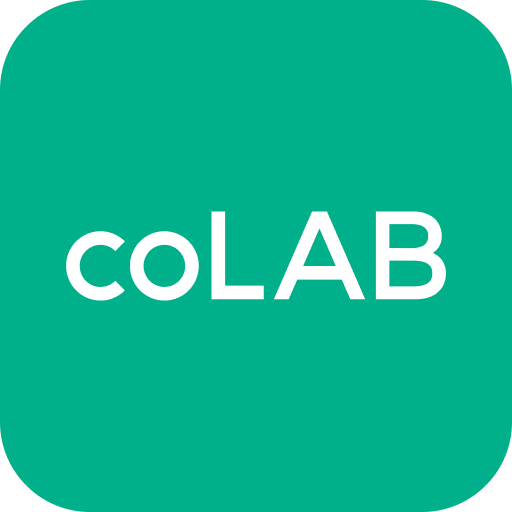This reflection is written by Kate Gallagher, founder and Chief Strategy Officer of coLAB. Kate’s journey into the nonprofit sector and her dedication to building strong and sustainable organizations have shaped the vision and values of coLAB. What follows is her story, in her own words, about why strategic planning matters, how her path led to this work, and why she continues to believe in the power of strategy to strengthen communities.
When I first stepped into the nonprofit sector right out of college, I witnessed both the beauty and the burden of mission-driven work. Organizations were doing incredible things, but often under intense pressure: scarce resources, boards with good intentions but little clarity, leaders stretched thin, and communities whose needs were greater than any single organization could meet.
I started my career at CASA, advocating for children and families, and quickly realized that passion alone wasn’t enough. Nonprofits needed structure. They needed strategy. They needed boards and leaders with tools, systems, and clear direction to match their commitment. That realization set me on a journey that has defined my career.
Building the Foundation
My early experiences inspired me to pursue a Master’s in Nonprofit Management at Regis University, in Denver, Colorado. That program opened the world to me, through coursework, fieldwork with nonprofits and NGOs across the United States and a capstone project in South Africa where I saw firsthand how vision and systems could transform entire communities.
After graduate school, I applied my learning with a national consulting firm, OP3. I had the privilege of working on large-scale campaigns, national fundraising strategies, corporate partnerships, and volunteer engagement initiatives that became models of excellence. I loved the energy, the creativity, and the scale,but when I moved back to Lancaster to raise my family, I knew I wanted to bring that same impact closer to home.
The Birth of coLAB
In 2014, I launched coLAB 1.0 with a simple conviction: our community deserves strong, sustainable nonprofits that have the clarity and confidence to lead lasting change. Since then, along with an incredible team, I’ve worked alongside organizations of every size, helping them pause, think differently, and design strategies that not only fulfill their mission but also build resilience and long-term impact.
Along the way, I’ve been inspired by mentors and thought leaders like Hildy Gottlieb, whose visioning frameworks I still use today, and colleagues across the country and beyond who model collaboration, courage, and innovation.
Why Strategic Planning?
At its heart, strategic planning is about slowing down so you can move forward with purpose.
Too often, nonprofits are caught in the whirlwind of daily demands,program delivery, fundraising events, staffing needs. The urgent overtakes the important. But when an organization takes the time to step back, reimagine its future, and design the systems to get there, something powerful happens:
- Leaders are empowered. Boards and staff gain clarity on where they’re going and how to get there.
- Resources align. Fundraising and staffing strategies flow from clear goals, making organizations more attractive to donors, employees, and partners.
- Impact deepens. With systems to measure outcomes and demonstrate success, organizations can build credibility, accelerate results, and tell a more powerful story.
- Communities benefit. When nonprofits thrive, the ripple effects strengthen the very communities they serve.
Nonprofits exist to solve problems bigger than any one of us. Strategic planning gives them the tools to do that well,not just for today, but for the long haul.
A recent example is our work with the Lancaster Conservancy, where strategic planning brought together staff, board members, and community stakeholders to look five years (and beyond!) at the role of the Conservancy’s preserves and education programs, among many other critical components of their work in both York and Lancaster County. By aligning priorities, clarifying staffing structures, and building a roadmap for organizational sustainability, the Conservancy not only strengthened its capacity but also positioned itself to expand its impact on conservation and education across the region. This is the power of strategy in action, when vision meets structure, organizations unlock new potential to serve their communities.
Why I Love It
For me, this isn’t just work, it’s a calling. Strategic planning allows me to blend everything I care about: empowering people, building systems that last, and creating space for bold visions that feel possible. Every planning process is a chance to listen deeply, to lift up voices that aren’t always heard, and to help organizations see that they can achieve more than they imagined.
And I don’t do it alone. The incredible coLAB team brings together expertise in strategy, data, implementation, and community engagement,and their brilliance, heart, and commitment inspire me daily. Strategic planning is not a solo endeavor; it requires a multidisciplinary team to create the greatest impact. My business partners and colleagues at coLAB are the reason this work is possible.
That same spirit of collaboration is what led us to develop VERVE, our software platform designed to make sustainability and strategic planning more accessible and equitable for nonprofits everywhere. We know that many organizations struggle with cost and capacity when it comes to planning, and VERVE is our way of putting affordable, practical tools directly into their hands,so every nonprofit, no matter its size or resources, can thrive.
I believe that when leaders take time to imagine the future, align around it, and chart a clear path forward, our communities are stronger, more equitable, and more resilient. That’s why I do this work, and why, after more than a decade of coLAB, I still love it.
With purpose + possibility,
Kate

